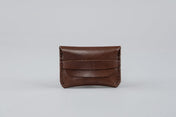There are many health benefits to wearing barefoot shoes. However, it is important to consider if your feet and body are ready for the switch.
If you are unsure, try a pair of barefoot shoes and gradually work your way up to wearing them on a daily basis. This will help your foot and body get used to the transition, and make it easier to continue using them over time.
Better Posture and Balance
Barefoot shoes respect the shape of your feet, allowing you to move around in a more natural way. This allows your muscles to become stronger and more coordinated, which improves posture and balance.
The bottom of a barefoot shoe is thin and flexible, designed to allow your foot to twist and bend naturally with each step. This allows your foot to absorb impact more efficiently and reduces stress on your ankles, knees and hips.
Many studies have shown that barefoot walking can help improve posture and balance, but some studies are conflicting. The methodical heterogeneity of bipedal static posturography hampers the comparability between different studies.
Less Stress on the Spine
When you walk in barefoot shoes, your body’s weight is distributed more evenly across the ground. That reduces the amount of strain on your spine and leg muscles, which helps to alleviate back pain.
The heel height of minimalist shoes may also contribute to back pain, as they’re more likely to absorb shock from hard surfaces when you walk.
Increased Calories Burned
Whether you're an experienced runner or new to running, barefoot shoes can help your muscles work harder. This increased effort leads to more calories being burned during a run, which is important for weight loss and maintaining a healthy weight.
This is because barefoot running requires runners to use their feet as the primary source of force when they strike the ground. This makes it less likely that you will jog or run with poor biomechanics, which can lead to injury.
If you're ready to give barefoot running a try, transitioning gradually will help you avoid pain or injury. To do this, you should begin by using a minimal shoe as an intermediate step. Then, increase your time in the shoes by no more than 20% of your total running volume each week.
Reduced Risk of Injuries
There are many advantages to wearing barefoot shoes, but one of the biggest benefits is the reduced risk of injuries. Runners who wear traditional running shoes are more likely to suffer from foot injuries such as strains, sprains and fractures than those who run barefoot.
This is due to the fact that running in a traditional shoe requires the foot to work harder than it would without the support of the shoe. This makes the foot weaker over time and leads to injury.
Barefoot running reduces this risk of injury by allowing the foot to strike the ground with less force than it does in a traditional shoe.
Less Pain
Barefoot shoes don’t squish or compress your foot nerves, muscles, ligaments, and bones as regular footwear does. Instead, they mirror the shape of your feet and give your toes plenty of space to wiggle and thrive.
This is a key to avoiding pain and deformities in your feet. If you’ve been wearing shoes that constrict your feet, it can take some time to make the transition to barefoot shoes.
Start by spending a few minutes a day in minimal shoes and gradually increase the time until you can wear them all day. The goal is to slowly strengthen the underused muscles of your feet and encourage proper body alignment.




